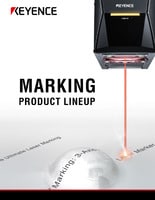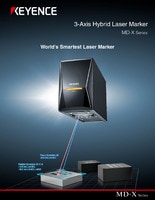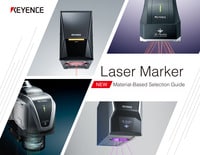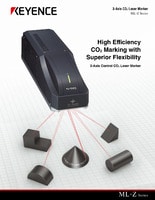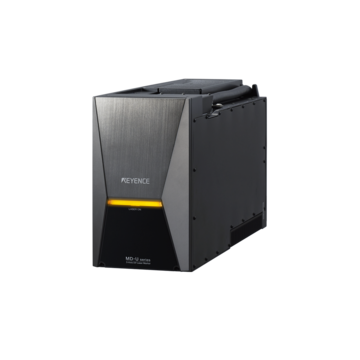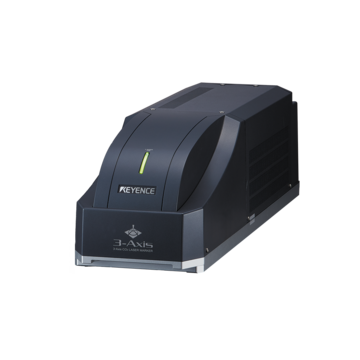Industrial Laser Marking Systems / Laser Markers
What Does the Price of a Laser Marker Depend on?
-
Tags:
- Laser Marking , Laser Engraving , Laser Etching
Laser marking equipment plays an important role in manufacturing across the globe. It provides accuracy and efficiency in product identification, traceability, and more. Various models, features, and laser marking equipment are available, yet many wonder what the price of laser marking machines depends on.
In the following, we will break down the factors that influence the pricing of laser marking devices. Every aspect, including size, power, speed, efficiency, and marking area, contributes to the overall price and should be considered before buying.
Factors Influencing Laser Marking Machine Prices
With the laser marking market estimated to reach $3.91 billion this year, more manufacturers will integrate this equipment into operations. This particular growth trend in the laser marking market highlights the increasing demand for laser marking equipment across industries.
To be better equipped to narrow down the best options for your needs, it is helpful to understand the main factors affecting laser marker market prices. The price of laser marking machines depends on various factors, such as laser type, power and wattage, size and marking area, and the machine’s integration capabilities.
Let’s take a closer look at how each parameter plays a role in determining the cost of a laser marking machine.
Laser Type
First, the type of laser being offered is one of the most important factors that determines price. Common laser markers include fiber, UV, and CO2, and each offers unique characteristics.
For example, CO2 laser markers are common across many industries and offer fast processing speeds. Compared to other laser types, they are cost-effective thanks to a lower initial investment and operating costs.
Fiber lasers, on the other hand, are more expensive than others because they are more robust and have higher photoelectric conversion than other types. The cost of the equipment is also heavily influenced by the power of the laser, with more powerful machines demanding a higher price point.
Output Power
First things first, power. Output power is a very important factor when it comes to industrial laser marking prices. Similar to how a car relies on horsepower to operate, a laser marker needs the right amount of power for different applications. The heart of these devices lies in the power they are able to generate and output in order to create marks on the targeted workpiece.
The ability of a laser to quickly and/or deeply mark various materials increases with its output power, which is expressed in watts. In most cases, devices that output more watts are more expensive. However, it is important to adjust the intensity of the laser according to the needs of your unique mark. Excess power can lead to damage to your parts, unnecessary costs, and a higher overall laser marking machine price than what might be required for your applications.
Size and Marking Area
The size and marking area of laser markers are other factors that directly impact the selling price. Larger areas offer more versatility, allowing you to work with a variety of part sizes (or even mark multiple parts at once) that would otherwise be an issue on smaller machines.
However, it is important to note that this versatility often comes at a premium. Conversely, if you only need markings for small items, then choosing a machine with a smaller marking area can save you money without sacrificing productivity.
Integration Capabilities
In the era of Industry 4.0, seamless communication is paramount. Integrating laser markers with industrial automation systems and software, for example, makes it easy to integrate into your current workflow. Although these features improve efficiency and simplify operations, they can increase overall equipment costs. However, the benefits of integration often outweigh the initial costs, resulting in long-term cost savings and increased efficiencies.
We’re here to provide you with more details.
Reach out today!

Industry-Specific Requirements Affecting Industrial Laser Marking Prices
In addition to the aforementioned factors, industry-specific requirements can also affect the cost of industrial laser markers.
In industries with stringent regulatory standards, such as aerospace and medical device manufacturing, laser markers must meet specific requirements. Similarly, companies with unique products requiring marks, such as automotive electronics manufacturers, may require specialized laser systems tailored to their specific needs.
For example, laser marking devices designed for metal can feature different wavelengths and laser mediums than those used for plastic or ceramic marking. These special features and capabilities usually come at a premium but are necessary to achieve accurate and durable marks on hard surfaces.
Applications of Laser Markers Within Different Industries
When discussing factors affecting laser marker prices, it is also important to understand laser engraving applications across various industries.
In the automotive industry, laser marking plays an important role in part identification, traceability, and branding. Laser marking is used to engrave numbers, logos, and barcodes on vehicle parts, ensuring consistent traceability throughout the supply chain.
Fiber laser marking systems are commonly used because of their high output power and ideal wavelength for high-speed metal marking.
Also, hybrid laser markers, like the MD-X Series, combine different laser technologies that can be used with a variety of materials. For example, aluminum castings, carbide tools, resin cases, and electronic components can be safely marked.
In the medical device industry, laser marking is essential to meet stringent regulatory requirements, ensure product safety, and facilitate traceability. Laser marking is also used to engrave batch numbers, expiration dates, and regulatory markings on medical devices and implants. UV laser markers are commonly used to mark delicate medical materials, providing high contrast and readability in difficult environments.
Fiber laser markers, like the MD-F Series, are capable of high-quality marking and eliminate the need for tooling changes. Their compact size allows for the installation of the device in nearly any environment.
Final Words
As we discussed, industrial laser marking prices are influenced by factors such as power, size, and industry-specific applications. By understanding these factors and considering your specific marking needs, you can make an informed decision when choosing a laser marker that fits your budget while meeting your needs.
Remember, in the world of industrial laser marking, it’s not just the upfront costs but the importance of long-term profitability and ROI that should be considered.
Ready to learn more about laser markers and explore how they can impact your operations? Contact KEYENCE today.
Curious about our pricing?
Click here to find out more.


